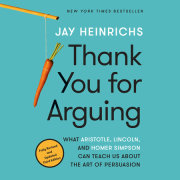Introduction
“They’re exactly like us minus our useless mental power and thumbs.” —Bob Tarte
When people asked me for a beginner’s guide to the art of persuasion, I thought,
Cats. Then I thought,
Terrible idea. Persuading people is hard. Persuading cats? Much, much harder, because they rank among the world’s top negotiators. They are masters in the dark art of persuasion.
Being a lover of cats myself, I have personal experience of arguing with them. Although I have written a bestselling book on persuasion, I still lose most of the arguments I have with my two cats, Maturin and Killick.
Then something happened that made me change my mind. I was giving a persuasion workshop at an advertising agency in London. During a break to check my emails I borrowed the office of the art director, Natalie Palmer- Sutton. Her walls were covered with brilliant cat art. The pictures looked as if Natalie had peered right past her cats’ pretty faces and into their devious little souls. If she could do that, I thought, I just might be up to the challenge. Maybe I could uncover their cunning tricks to charm and convince. It would be worth the effort. If you could learn to persuade a cat, then any human—friend, loved one, boss, even a teenager, for crying out loud—would bow to your magic.
I begged Natalie to team up with me. We would try to make people laugh while teaching them the best secrets for persuading anyone. Including a cat. This book is the result.
“Wait,” says a non-cat person. “
Cats don’t talk.”
Sure they do. They purr. They meow. We know one who makes weird happy grunting noises when he eats. Admittedly, half the time you don’t know exactly what cats are talking about. But whose fault is that? Besides, half the time we don’t know what
humans are talking about. Cats and people alike frequently talk nonsense. Both often behave illogically. But if you know a few tricks, you can get along with even the most stubborn and senseless cat or human.
This is the theory behind rhetoric, the art of persuasion. Invented almost 3,000 years ago by ingenious Greeks, rhetoric was studied by such luminaries as the philosopher Aristotle. He wrote the classic book on the subject—after he finished his famous one on logic. Aristotle realized that, while logic is excellent and noble, and a first-r-ate way to make a friend look like a drooling idiot, a perfectly logical argument fails to persuade most of the time. Aristotle and the rhetoricians who came after him discovered that other factors persuade people better than logic, namely, our emotions, our identities, and the people we hang around with. This book, based on many years of studying rhetoric—and of observing cats, those masters of the art—will show you how to use these factors to persuade humans (and cats).
Just keep in mind that cats are not quite the suckers you and I are. Being more cautious and skeptical, they tend to be wiser than humans, especially when it comes to interspecies relations. Still, cats are no more logical than humans. The same rhetorical tricks can work for both. Learning to argue with cats will not only improve your relationships with cats, it will help you get along with humans.
Cat persuasion techniques can also protect you against the tricks pulled on you by marketers, politicians, and dodgy sorts of all stripes. Like these people, cats are skilled manipulators who can talk you into just about anything with scarcely a word. They can get you to drop whatever you’re doing and play with them. They can make you serve their dinner way ahead of schedule. They can get you to sit down right this instant and provide a lap.
On the other hand, try getting a cat to do what
you want.
While it’s hard, persuading a cat is possible. And after that, persuading humans becomes a breeze. You just need to learn the persuasion skills in this book. We’ll teach you how to:
• Hold an intelligent conversation—one of the few things easier to do with a cat than a human.
• Argue logically, even if your opponent is hairy and irrational.
• Hack up a fallacy (the hairball of logic).
• Make your body do the talking. (Cats are very good at this.)
• Master decorum, the art of fitting in with cats, venture capitalists or humans.
• Learn the wisdom of predator timing and pounce at the right moment.
• Get someone to do something, or stop doing it.
• Earn any creature’s respect and loyalty.
The tools to accomplish these feats come from Aristotle and the other masters in the art of persuasion. We hope this book makes the art easy to practice. The tools in here are simple, even if cats aren’t. Once you get comfortable with them, you might consider learning more about rhetoric in
Thank You for Arguing.
Meanwhile, relax. An argument doesn’t have to lead to spitting and scratching. Remember, an agreeable lap goes a long way. And, as the next chapter shows, resolving a disagreement starts by simply being agreeable.
Chapter 1
Practice Agreeability: The Brilliant Purr
Turn a disagreement into a beautiful relationship
“To err is human, to purr is feline.” —Robert Byrne
The first thing every cat knows, and you should know too, is that an argument is not a fight. In a fight, you try to win. You want to dominate the other person and make him admit defeat. The loser in a fight is never very happy about it.
In an argument, you try to
win over the other creature. You get your opponent to agree on a solution, or to make a choice. While both a fight and an argument start with a disagreement, only an argument can make both sides happy. How? By reaching an agreement that benefits both of you. In the best kind of argument, both sides think they won.
A cat knows the difference by instinct. When she sinks her teeth into you, she means to fight. It’s a play-fight maybe, but still fighting. She is not interested in a useful conversation. Her goal is to win the fight.
Same thing when a little boy sinks his teeth into his sister. This probably isn’t a play-fight. He probably feels angry. Still, his goal is the same as the cat’s. He wants to beat his sister in a fight.
Most adults don’t bite each other. Not much, anyway. Instead, they fight by trying to score points off each other. They often treat a disagreement as a kind of debate. It’s as if they think an invisible panel will be holding up score cards at the end, judging who won the most points in the debate.
Or an adult will point out how the disagreement proves what a jerk the other person is. Or she’ll point out her opponent’s past idiotic opinions and mistakes. In each case, she is not arguing. She’s fighting. Trying to win. From a persuasion standpoint, her behavior works about as well as biting does, though it’s maybe a little less painful.
So is there a way to turn a disagreement into something positive? Yes. By arguing. An argument is not about domination. It’s about getting another person to make a choice or take an action that you want.
A cat who bites means to fight. But a cat who gently claws your leg is making an argument:
Pay me attention. I want food/play/love/access to high places. (Every cat was a monkey in his past life.)
The leg-clawing offers the perfect opening to an intelligent dialogue, where you can share points of view and develop a mutually satisfying conclusion.
Jay: Want to get up on the highest bookshelf? The one you can never get down from?
Killick:
[Claws a little more insistently.] Jay: How about my shoulder?
[Picks up the cat.] Killick:
[Balances precariously on Jay’s shoulder, looking meaningfully at the highest shelf.] Jay: Tell you what. We’ll go check the bird feeder out the window and imagine eating the sparrows.
Killick:
[Aims Jay towards the window.]
This is the perfect argument. Killick enjoys the high vantage point, and Jay has an excuse to skip a chore. An argument starts with a disagreement and ends up with a choice that both sides can live with.
A fight, on the other hand, usually comes with anger. While an argument can also start with somebody getting angry, the whole point is to settle something. To make a mutual choice.
Jay: Who knocked over the lamp?
Killick:
[Looks thoughtfully into the distance.] Jay: Not you? Really? Do you think your habit of jumping on to tables might have had something to do with it?
Killick: [
Sits in a neutral corner.] Jay: So if I get a bigger lamp, there won’t be any room left on the table for you.
Killick:
[Grooms, perfectly satisfied with the outcome.] Humans tend to get defensive at moments like this, claiming innocence instead of fixing the problem.
Jay: Who knocked over the lamp?
Child: Not me!
We need to learn from cats. Air your disagreements with the aim of finding solutions.
One way to take the anger out is to propose a choice. Aristotle called this kind of conversation a
deliberative argument. Deliberation has to do with choices. Here’s the important thing about presenting these choices: You have to show how they benefit your audience. (Aristotle called this tool the
advantageous. It works great on humans but isn’t necessary for cats. They already know what’s to their advantage.)
Suppose you want to go to a concert on Saturday. Your partner doesn’t want to. He looks tired. Instead of saying, “Come on, we never go out enough!,” try offering a choice.
You: I just thought the concert would be amazing. It’s the one kind of music we agree on. But if you’re too tired to go out, we could just invite the Smiths over. They’re very restful people.
Partner: Restful? You mean boring.
You: You’re right. Way too boring. I’ll get us concert tickets.
Again, this may not work, and you’ll need to master the other tools in this book. But the advantageous ploy sounds a lot less whiny than the usual argument.
Still, what about Killick, our lamp-knocking cat? Jay may have to make the choice himself. (Actually, that’s sort of what you did with the concert. Cats and partners aren’t that terribly different, after all.) Jay can move the table to where it will never catch the sunlight. Or he can buy a bigger lamp. Or he could try to get Killick to promise never to knock the lamp over again.
That last choice probably won’t work. A human may make such a promise without being sure he can actually keep it. But a cat knows better.
Okay, but what if your opponent continues to bite your leg? Or, if he isn’t the biting type, what if he just tells you you’re wrong and that you’re a total jerk? In other words, what if you want to argue with an opponent who just wants to fight? Here are several tools you can use to keep things cool and turn a fight into an argument.
1. Be agreeable
Here is one of the many ways that cats are wiser than people: When a human disagrees with another human, each usually tries to get the other to admit he’s wrong. When a cat disagrees with a human, on the other hand, she almost always tries to get what she wants. Cats also understand that one of the best ways to persuade people is to be agreeable. This is a skill that even humans can learn. Agreeability can lead to happier relationships, successful careers and a more persuasive life.
Even if you disagree with someone, or your opponent attacks you personally, nod your head and listen. Don’t get angry. And don’t push back against any of his points. Hold your fire.
You often see cats acting agreeably.
Natalie: I can’t believe you napped on my new dress!
Charlie:
[Looks at Natalie and listens politely.] Natalie: It will take forever to get all the hair out! And I’m supposed to be at dinner in half an hour!
Charlie:
[Blinks.] Natalie: What am I going to do with you?
Charlie:
[Does a slow-blink, letting slide the stupidity of Natalie’s question.] Natalie: Well, maybe I can use a sticky roller on it.
Charlie:
[Stretches. Problem solved.]
2. Say “Yes, and . . .”
If you have ever taken an improv class, you’ll know this method. You work with fellow comedians as a team. When someone says something, you don’t argue against it. Instead, you add to it, fleshing out what the other person said. You do this by saying “Yes, and . . .” This is one of those rare things humans do better than cats.
Of course, cats don’t need to say “Yes, and . . .” Instead, they have expressive tails. A gentle thump or wag will disarm your average human opponent.
Because we don’t have tails, we have to practice other methods, like improv, to disarm our human opponents.
Manager: I looked at your proposal for a dance theme at the office party, and I think we need to go in another direction. Instead of “Fist Pump” (what kind of theme is “Fist Pump”?), I think we should call the dance “Under the Sea.” Everybody loved
Little Mermaid. You: “Under the Sea.” Sure, an aquatic theme. We can call it “Fin Pump.”
Manager: Huh? What’s a fin pump?
You: Right, good point. And it’s better to just call it plain “Fist Pump.”
While this may not work, at least you will have confused the boss for a while. Which is satisfying. A cat can do this just by staring at you or by stretching against your leg. This makes you wonder whether she really got your message—or whether she has a mysterious message of her own.
3. Groom your opponent
A cat can take the tension out by licking her opponent. In most cases, humans probably should not do this. Licking an angry person will probably not calm him down. But a small dose of flattery might work.
Father: I want to know who ate the last of the cookies.
Teen: Well . . . Wow.
Father: Well?
Teen: Sorry, I was distracted by your shoes. Those are really cool shoes!
Father: We’re not here to talk about my shoes! We’re here to talk about my cook– I mean, the family . . . You know what I mean!
The teen may still be in trouble. And the father may see right past her flattery. But Dad will also shine his shoes tonight, thinking maybe his kid isn’t so bad after all. Though she shouldn’t have eaten those cookies.
Copyright © 2018 by Jay Heinrichs with illustrations by Natalie Palmer-Sutton. All rights reserved. No part of this excerpt may be reproduced or reprinted without permission in writing from the publisher.









